Riyadh Metro lines
Riyadh Metro Lines
Hop on board the Riyadh Metro Lines, Saudi Arabia’s exciting new way to travel! Launched on November 27, 2024, this driverless metro system transforms how you move around the capital. Spanning 176 kilometers with 85 stations across six color-coded lines, it connects bustling districts, universities, and landmarks like never before. Say goodbye to traffic jams—Riyadh’s metro cuts congestion and saves time for locals and tourists alike. Aligned with Saudi Arabia’s Vision 2030, it promotes eco-friendly travel, reducing 250,000 daily car trips. Whether you’re heading to King Khalid Airport or exploring the National Museum, the metro makes every journey easy.
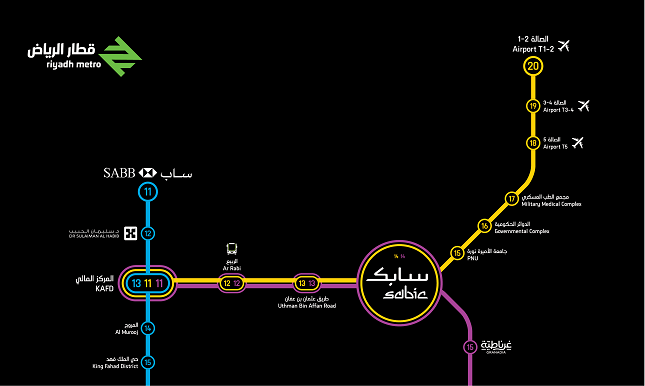
Riyadh Metro Lines Overview
What Are the Riyadh Metro Lines?
The Riyadh Metro Lines transform travel in Saudi Arabia’s capital. This 176-kilometer network includes six color-coded lines: Blue, Red, Orange, Yellow, Green, and Purple. With 85 stations, it connects key areas like King Khalid Airport and downtown Riyadh. The metro uses driverless trains, making it the world’s longest automated system. Built with a $22.5 billion investment, it features 190 trains, including Alstom’s Innovia and Siemens models. The system opened in phases: Lines 1, 4, and 6 started on December 1, 2024; Lines 2 and 5 followed on December 15, 2024; and Line 3 launched on January 5, 2025. It serves 1.2 million passengers daily now, with capacity for 3.6 million at full scale, according to the Royal Commission for Riyadh City.
Why the Riyadh Metro Matters for Saudi Arabia
The Riyadh Metro drives Saudi Arabia’s Vision 2030 for sustainable urban mobility. It cuts traffic by 250,000 car trips daily, saving 400,000 liters of fuel. This eco-friendly system links residents and tourists to universities, business hubs, and cultural sites. Stations like KAFD and Qasr Al-Hukm offer modern designs and accessibility features like WiFi and lifts. The metro boosts tourism and economic growth, making Riyadh a global city. It integrates with buses for seamless travel, supporting a greener, connected future.
Detailed Guide to Each Riyadh Metro Line
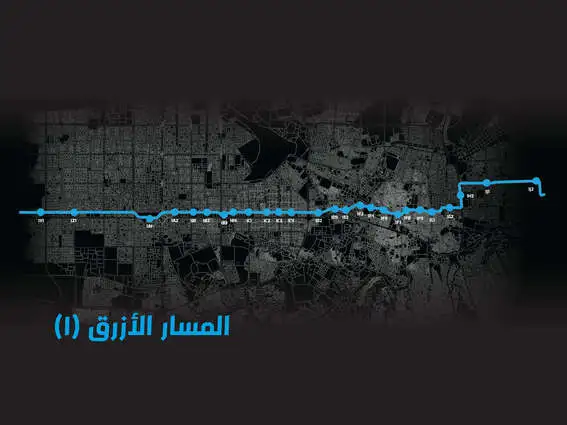
Blue Line: Exploring Downtown Riyadh
The Blue Line of riyadh metro lines , or Line 1, stretches 38 kilometers north to south. It covers 25 stations along Al-Olaya and Al-Batha roads. Key stops include STC Station and SABB. STC Station, a major hub, sits at the busy intersection of King Fahad and Olaya Streets. Its modern design and 97,000-square-meter space make it a standout. This line connects downtown Riyadh’s shops and offices. You can hop off at SABB to explore commercial areas. Opened on December 1, 2024, the Blue Line helps you navigate the city’s heart easily. It’s perfect for workers and visitors exploring Riyadh’s vibrant core.
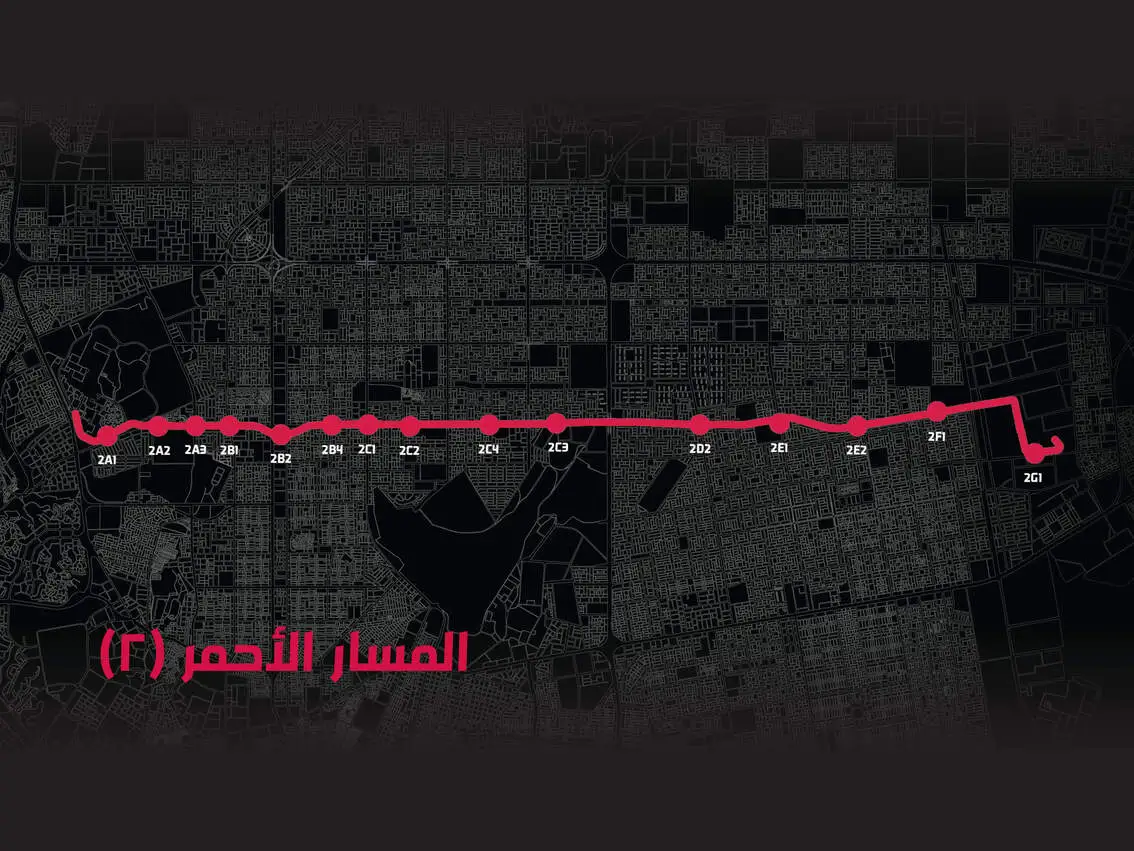
Red Line: Connecting Universities and Stadiums
The Red Line of riyadh metro lines , Line 2, runs 25.3 kilometers east to west along King Abdullah Road. With 15 stations, it serves key spots like King Saud University and King Fahad Stadium. The university station is a hotspot for students, while the stadium stop buzzes during sports events. This line, launched on December 15, 2024, links to the Blue Line at STC Station. It’s ideal for catching a game or visiting educational hubs. The Red Line makes travel to Riyadh’s lively event spaces quick and easy.
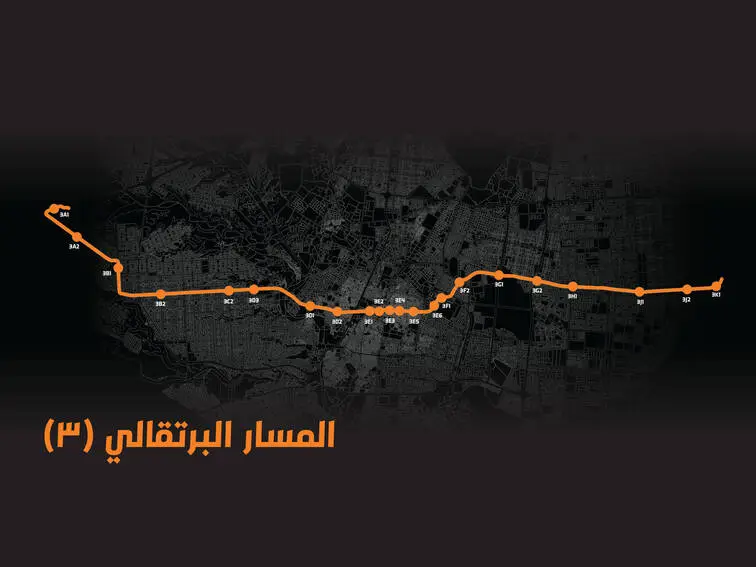
Orange Line: The Longest Route
The Orange Line, Line 3, is the longest at 40.7 kilometers. It runs along Al-Madinah Al-Munawarah Road with multiple stations, including Qasr Al-Hukm Downtown. This iconic station, opened on January 5, 2025, boasts a stunning inverted stainless steel cone design. It sits near the Riyadh Region Governor’s Palace, blending modern and traditional vibes. The Orange Line of riyadh metro lines connects government offices and commercial zones. Its eco-friendly design, with solar-powered depots, supports Vision 2030. Use this line to explore Riyadh’s major landmarks with ease.
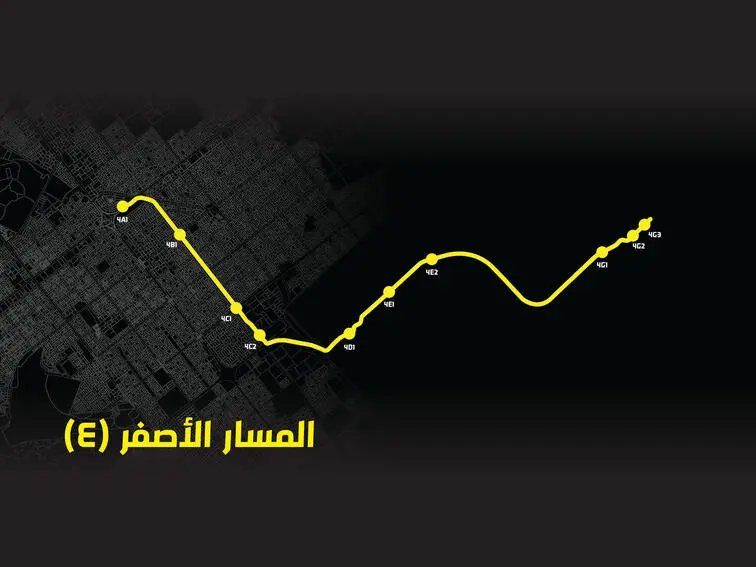
Yellow Line: Airport to Financial Hub
The Yellow Line, Line 4, spans 29.6 kilometers, linking King Khalid International Airport to the King Abdullah Financial District (KAFD). Opened on December 1, 2024, it serves travelers and business professionals. KAFD Station, a six-platform hub, connects to Line 6. This line makes airport trips hassle-free, with air-conditioned stations and WiFi. It’s perfect for catching flights or visiting Riyadh’s financial center. The Yellow Line of riyadh metro lines ensures you travel fast and comfortably to key business areas.
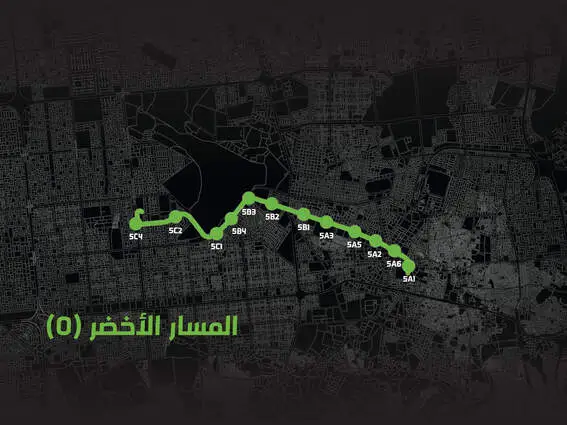
Green Line: Government and Cultural Hubs
The Green Line of riyadh metro line or Line 5, is the shortest at 12.9 kilometers. It runs along King Abdulaziz Road with stops like the Ministry of Education and National Museum. Launched on December 15, 2024, it connects government buildings and cultural sites. The National Museum stop is great for history lovers, showcasing Saudi heritage. This line links to the Red Line at the Ministry of Education Station. It’s ideal for quick trips to official or cultural spots in Riyadh’s center.
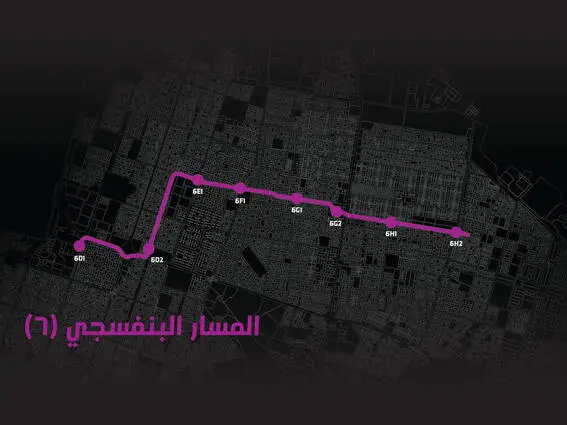
Purple Line: Residential and Retail Access
The Purple Line, Line 6, covers 29.7 kilometers along Abdurrahman Bin Awf Road. It serves residential areas and retail centers, with Al Hamra Station as a key stop. Opened on December 1, 2024, it connects to the Red Line at Al Hamra. This line is perfect for daily commuters and shoppers. It links busy neighborhoods, making errands or visits easy. The Purple Line of riyadh metro lines brings Riyadh’s vibrant communities closer together.
How to Use the Riyadh Metro
Buying Tickets Made Easy
Riyadh Metro tickets are simple to get. Use the Darb app on your phone or ticket machines at stations. A regular 2-hour pass costs SAR 4, while a first-class pass is SAR 10. For longer trips, grab a 3-day pass for SAR 20 or a 30-day pass for SAR 140. First-class options go up to SAR 350 for 30 days. The Darb app uses NFC technology for quick entry—just tap your phone. Machines accept cash or cards, making it easy for tourists. Download the Darb app from the App Store or Google Play, as advised by the Royal Commission for Riyadh City. Pick the pass that fits your travel needs!
Navigating Stations and Transfers
Riyadh Metro runs from 6 AM to midnight daily. Trains arrive every 3–5 minutes during peak hours and 5–10 minutes off-peak. All 85 stations are air-conditioned with free WiFi, lifts, and escalators for easy access. Major hubs like KAFD Station (Lines 4, 6) and STC Station (Lines 1, 2) make transfers smooth. Check station signs or the Darb app for line changes. For example, switch at STC to hop from the Blue Line to the Red Line. Stations like Qasr Al-Hukm offer shops and parking, perfect for quick stops. Plan your route to save time!
Tips for a Smooth Metro Journey
First time on the Riyadh Metro? Start with the Darb app to check routes and buy tickets fast. Use NFC tickets for quick gate access—tap and go! Arrive early at busy stations like KAFD or King Saud University during rush hours. Look for accessibility features like lifts if you need them. Bring a water bottle, as stations stay cool but trips can be long. Check the metro map at stations or online to find key stops like the National Museum. For tourists, the Yellow Line to King Khalid Airport is a game-changer.
Iconic Stations and Unique Features
Architectural Marvels of Riyadh Metro
Riyadh Metro’s iconic stations stun with bold designs. King Abdullah Financial District (KAFD) Station, serving Lines 4 and 6, is a six-platform hub for business travelers. Its sleek look fits Riyadh’s financial core. STC Station, connecting Lines 1 and 2, spans 97,000 square meters at a bustling intersection. Qasr Al-Hukm Station on Line 3, opened January 5, 2025, dazzles with an inverted stainless steel cone design near the Governor’s Palace. Western Station, also LEED-certified, blends modern style with green standards. These stations, noted by the Royal Commission for Riyadh City, offer parking, shops, and WiFi. Each stop feels like a landmark, making your metro ride unforgettable!
Sustainability and Technology
Riyadh Metro lines leads with cutting-edge tech and green goals. Its 190 driverless trains, built by Alstom and Siemens, ensure safe, fast trips. Solar-powered depots, like West Depot on Line 3, cover 33% of energy needs, per official reports. The metro cuts 250,000 daily car trips, saving 400,000 liters of fuel. This eco-friendly design supports Saudi Arabia’s Vision 2030 for a greener future. Integration with Bus Rapid Transit (BRT) and Demand Responsive Transit (DRT) networks connects every corner of Riyadh. Air-conditioned stations with lifts and escalators make travel easy for all. Ride the metro to experience tech and sustainability in action!
Future Expansions and Vision 2030
- What’s Next for Riyadh Metro?
- Riyadh Metro plans exciting expansions to connect more neighborhoods. Line 7, a proposed 65-kilometer route, will link King Khalid International Airport to Qiddiya Entertainment City, passing through Diriyah, New Murabba, and King Salman Park. It includes 19 stations, with 14 underground, per the Royal Commission for Riyadh City. Bidding for Line 7’s design and construction began in September 2024, with a deadline of March 10, 2025. Line 2’s extension will add 10 kilometers, reaching the Diplomatic Quarter and Diriyah, where construction has started. Future routes may connect Khuzam, Badr, and Shafa District, expanding access to growing suburbs. These plans, shared in a 2025 podcast by Riyadh Metro’s head, aim to serve Riyadh’s rising population, projected to hit 9.6 million by 2030.
- Aligning with Saudi Vision 2030
- Riyadh Metro lines drives Saudi Arabia’s Vision 2030 for sustainable transport. It cuts traffic congestion and boosts air quality by reducing 250,000 daily car trips. The expansions support economic growth, linking key projects like Qiddiya and New Murabba to global events like Expo 2030. Vision 2030 aims to make Riyadh a top-10 global city by 2030, per Crown Prince Mohammed bin Salman. The metro’s eco-friendly design, with solar-powered depots, aligns with green goals. It connects communities, fostering mobility and opportunity for residents and tourists
Frequently Asked Questions
What are the names and colors of the Riyadh Metro lines?
The Riyadh Metro has six lines: Blue, Red, Orange, Yellow, Green, and Purple. Each line is color-coded to make routing easier.
What is the total length covered by all the metro lines?
The combined length of all six lines is about 176 kilometers, serving 85 stations.
When did the different metro lines start operating?
The metro lines opened in phases starting December 2024, with most lines fully operational by early 2025.
Which line serves the airport?
The Yellow Line (Line 4) connects the King Khalid International Airport to the rest of the metro network.
How many interchange (transfer) stations are there among the lines?
Several stations serve as interchanges where multiple lines intersect, allowing passengers to switch from one line to another.
Which is the longest metro line in Riyadh?
The Orange Line (Line 3) is among the longer lines, spanning over 40 km.
Are parts of certain lines underground while others are above ground?
Yes — some lines or segments are underground, others are elevated or at-grade, depending on the terrain and urban layout.
Are all lines driverless and automated?
Yes, the Riyadh Metro is designed as a fully automated, driverless system with advanced control systems.
Why Choose Riyadh Metro?
Perfect for Tourists and Locals For tourists, Riyadh Metro lines opens up landmarks like the National Museum on the Green Line. Visit Qasr Al-Hukm or King Saud University easily. Locals enjoy quick commutes to work or shops via the Purple Line. The Yellow Line connects King Khalid Airport to KAFD, ideal for travelers. Download the Darb app to buy tickets and plan routes in seconds. Whether you’re exploring Riyadh or heading to work, the metro fits your life. Start your journey today—ride the Riyadh Metro! | A Smarter Way to Travel Riyadh Metro lines makes travel fast, affordable, and green. A single ride costs just SAR 4, with monthly passes at SAR 140. Trains run from 6 AM to midnight, arriving every 3–5 minutes during peak hours. The metro cuts 250,000 car trips daily, saving 400,000 liters of fuel, per the Royal Commission for Riyadh City. Air-conditioned stations with WiFi and lifts ensure comfort for all. Skip traffic jams and parking hassles—ride the metro to save time and money. Its driverless trains, built by Alstom and Siemens, offer safe, reliable trips. Choose the metro for a smarter, eco-friendly. |
|---|
Conclusion
Riyadh Metro Lines redefine travel in Saudi Arabia’s capital. Six color-coded lines—Blue, Red, Orange, Yellow, Green, and Purple—span 176 kilometers, connecting 85 stations like KAFD, STC, and Qasr Al-Hukm. These lines link airports, universities, and landmarks, making commutes and sightseeing easy. Affordable tickets start at SAR 4, and the Darb app simplifies planning.
The metro’s driverless trains and eco-friendly design cut 250,000 car trips daily, supporting Vision 2030’s green goals. From tourists visiting the National Museum to locals heading to work, everyone benefits. With expansions like Line 7 on the way, Riyadh’s mobility keeps growing. Plan your journey today with the Riyadh Metro! Download the Darb app and explore the city’s vibrant future, per the Royal Commission for Riyadh City.
